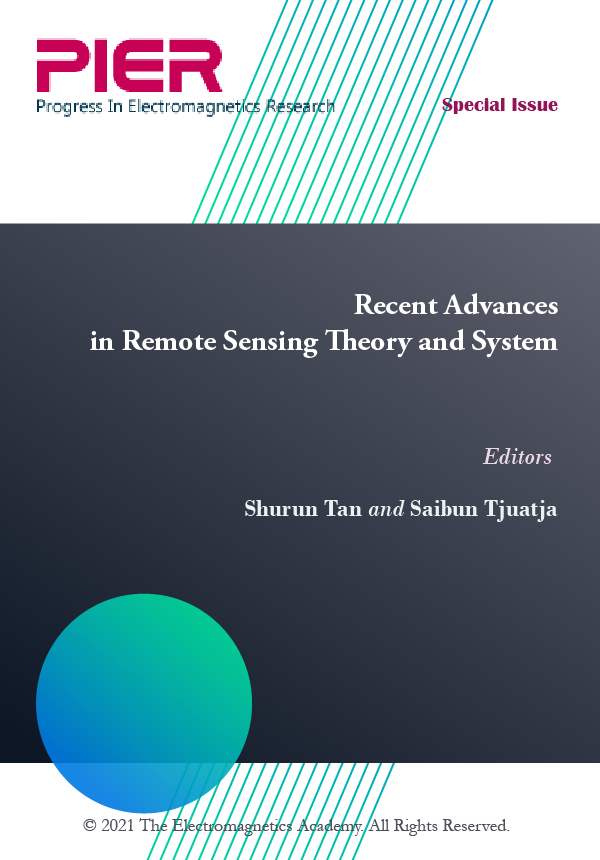基于smap主动算法的l波段雷达散射与小麦、油菜和牧场土壤水分反演
IF 9.3
1区 计算机科学
Q1 Physics and Astronomy
引用次数: 4
摘要
小麦、油菜和牧草是2012年土壤水分主被动验证实验(SMAPVEX12)中研究的三种主要植被类型,该实验是为了支持NASA的土壤水分主被动(SMAP)任务而进行的。将所利用的模型结构集成到SMAP基线主动检索算法中。为小麦和油菜田开发了l波段VV和HH反向散射正向查找表(数据立方)。数据立方体有三个轴:植被含水量(VWC)、粗糙土壤表面均方根(RMS)高度和土壤介电常数。利用畸变玻恩近似和双弹跳散射中的相干反射率计算了场的体散射和双弹跳散射。表面散射由麦克斯韦方程组(NMM3D)的数值解决定。利用SMAPVEX12收集的10块麦田、5块油菜地和3块牧场的机载雷达数据验证了数据库的结果。结果表明,数据立方体仿真与机载数据吻合较好。小麦、油菜和牧场的HH和VV的均方根误差分别为0.82、0.78和1.62 dB和0.97、1.30和1.82 dB。数据立方体接下来用于执行土壤湿度的时间序列检索。小麦、油菜和牧场土壤水分反演的均方根误差分别为0.043 cm3/cm3、0.082 cm3/cm3和0.082 cm3/cm3。本文的研究结果扩大了SMAP基线雷达算法在小麦、油菜籽和牧场形成的应用范围,并对其性能进行了定量验证。它还将应用于即将到来的NISAR (NASA-ISRO SAR任务)。本文章由计算机程序翻译,如有差异,请以英文原文为准。
L-BAND RADAR SCATTERING AND SOIL MOISTURE RETRIEVAL OF WHEAT, CANOLA AND PASTURE FIELDS FOR SMAP ACTIVE ALGORITHMS
Wheat, canola, and pasture are three of the major vegetation types studied during the Soil Moisture Active Passive Validation Experiment 2012 (SMAPVEX12) conducted to support NASA’s Soil Moisture Active Passive (SMAP) mission. The utilized model structure is integrated in the SMAP baseline active retrieval algorithm. Forward lookup tables (data-cubes) for VV and HH backscatters at L-band are developed for wheat and canola fields. The data-cubes have three axes: vegetation water content (VWC), root mean square (RMS) height of rough soil surface, and soil permittivity. The volume scattering and double-bounce scattering of the fields are calculated using the distorted Born approximation and the coherent reflectivity in the double-bounce scattering. The surface scattering is determined by the numerical solutions of Maxwell equations (NMM3D). The results of the datacubes are validated with airborne radar measurements collected during SMAPVEX12 for ten wheat fields, five canola fields, and three pasture fields. The results show good agreement between the datacube simulation and the airborne data. The root mean squared errors (RMSE) were 0.82 dB, 0.78 dB, and 1.62 dB for HH, and 0.97 dB, 1.30 dB, and 1.82 dB for VV of wheat, canola, and pasture fields, respectively. The data-cubes are next used to perform the time-series retrieval of the soil moisture. The RMSEs of the soil moisture retrieval are 0.043 cm3/cm3, 0.082 cm3/cm3, and 0.082 cm3/cm3 for wheat, canola, and pasture fields, respectively. The results of this paper expand the scope of the SMAP baseline radar algorithm for wheat, canola, and pastures formed and provide a quantitative validation of its performance. It will also have applications for the upcoming NISAR (NASA-ISRO SAR Mission).
求助全文
通过发布文献求助,成功后即可免费获取论文全文。
去求助
来源期刊
CiteScore
7.20
自引率
3.00%
发文量
0
审稿时长
1.3 months
期刊介绍:
Progress In Electromagnetics Research (PIER) publishes peer-reviewed original and comprehensive articles on all aspects of electromagnetic theory and applications. This is an open access, on-line journal PIER (E-ISSN 1559-8985). It has been first published as a monograph series on Electromagnetic Waves (ISSN 1070-4698) in 1989. It is freely available to all readers via the Internet.

 求助内容:
求助内容: 应助结果提醒方式:
应助结果提醒方式:


